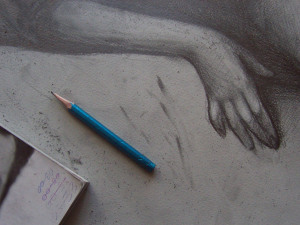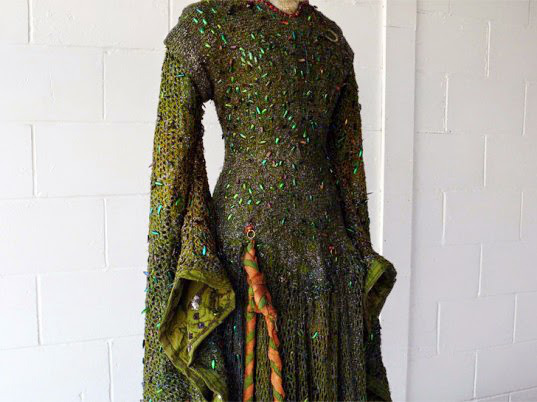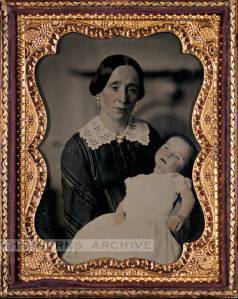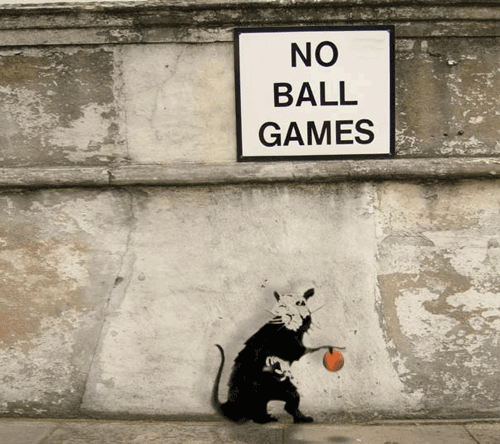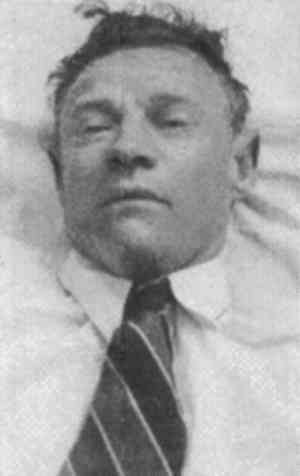Eileen Maksym's Blog, page 21
October 15, 2014
Cloud Dress: the Next Big Thing
Artist and inventor Dominic Wilcox has some great ideas. Click on the image for more! (Hat tip WeWasteTime.)

October 13, 2014
Naked
When I was a sophomore in college, I decided to take an intro drawing class. I had always loved art and drawing, and had filled many sketchbooks as a kid, mostly with cats. I thought taking a class would be fun.
I had no idea what I was in for.
I arrived on the first day of class with my required sketchpads and pencils and charcoals, not knowing what to expect but excited to get started. There was a circle of easels in the studio, and we were told to pick one and set up with newsprint and a pencil. I was just about ready when a stout man walked into the room, barefoot and wearing a powder blue bathrobe. He strolled to the center of the circle, and with a complete lack of reservation shed the bathrobe, revealing that he was entirely naked underneath. He placed a fist on one hip and held out his other arm, his hand dangling limply from his wrist.
Everyone started drawing.
Everyone but me.
I was shocked, and felt stupid for being shocked. The course description had mentioned exploring the human form, but for some reason I didn’t realize that meant nudes. I couldn’t look straight at the man. I was fighting the urge to dissolve into nervous laughter, and felt stupid for that, too. What was I, twelve? No one else was laughing.
Then the door opened, and two students came in. They saw the naked guy and their eyes went wide. “OH MY GOD!” one of them gasped, and they turned tail and rushed out, the door slamming behind them.
Several of us laughed. The tension was broken, and I was able to actually start drawing. Granted, I was still pretty uncomfortable. And I still wasn’t able to draw anything below the waist of our model…that took a couple sessions. But at least I wasn’t afraid I was just going to start giggling uncontrollably.

October 10, 2014
Adding to the Past
Tom Butler modifies antique postcards with ink and gouache to make the expected unexpected. Click on the image for more. H/T We Waste Time.

October 8, 2014
Cloaked in Death
The above dress was worn in 1888 by actress Ellen Terry in the role of Lady MacBeth. It is made of thousands of jewel beetle wings. Quite appropriate for Lady MacBeth, to be draped in thousands of small deaths. Click on the photograph to learn more. Hat tip Morbid Anatomy.

October 6, 2014
Our Rejection of Death
Once upon a time, post-mortem photography was very common. Photographs were expensive, so often these images were the only ones families had of their lost loved ones. Infant mortality rates were very high, so a lot of these pictures, like the one above, are of babies or young children. I find this image to be particularly striking because of the look on the mother’s face. The living portrayed usually have neutral expressions, a necessity for producing a good picture since the exposure time needed was so long that movement would blur the image. This woman’s palpable sorrow is rare, and deeply moving. You can feel her grief.
Nowadays, many people react to these images with revulsion, finding them ghoulish, even disgusting. And I think that says far more about us than it does about our predecessors. Time was, the care of the dead was an intimate family affair. The family would wash and clothe the body, and lay it out for viewing within their own home, often in the parlor. Nowadays, the dead are whisked away, embalmed in cold sterile rooms by strangers, and laid out in “parlors” devoid of any warmth or personality. When I worked for a funeral home some years ago, I noticed that the funeral directors would lay the bodies out in the designated rooms sometimes as much as a day ahead of time. The dead weren’t people, they were props; filled with chemicals to delay decay, injected with silicone to plump out faces made gaunt by sickness, painted to look pretty, to look like the photographs the families supplied. Ironic, the modifications made in a vain attempt to make the deceased look like “themselves.”
We want to distance ourselves from death, to tuck the dying away in hospitals, to sculpt our dead and our rituals in such a way that keeps the dead as “other.” Why would we take pictures of the dead? That’s not our grandmother/mother/child. It’s “disrespectful,” I suspect because we aren’t supposed to remember people in death, we’re supposed to remember them in life, to photograph them in life.
If we can keep death within its boundaries and out of our everyday lives, then maybe, just maybe, we won’t die.
And yet we will. Sterilizing our lives, shooting it full of chemicals, plumping our features in a vain attempt to chase our lost youth…ultimately none of this will keep our decomposition at bay. And when we treat death as a horror to be shoved away instead of a reality to be ultimately embraced, we rob ourselves of fully embracing, and being fully embraced by, our loved ones, even in death.

October 3, 2014
Animated Subversion
Graffiti artist Bansky’s work taken to a whole new level. Click on the dribbling rat for more. (h/t A New Hype)

October 1, 2014
Transformations
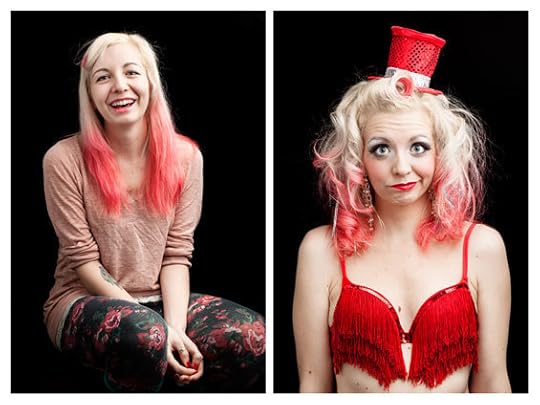
Hat tip Beautiful/Decay. Click on the image for more (somewhat NSFW)
I really like these before and after portraits of burlesque performers by Sean Scheidt (link NSFW). They’re a compelling reminder that people are more complex than our initial impression based on their appearance might be, and encourage me as a writer to give my characters many, and sometimes surprising, facets.

September 29, 2014
The Unexplained and Filling In The Blanks
This is a postmortem photograph of a person known only as “The Somerton Man.” He is the central figure in the Taman Shud case, one of the strangest unexplained murder mysteries of all time. Unidentified murder victims are not all that uncommon, even today; there’s actually a website called The Doe Network that posts pictures and information on victims that have gone unnamed. Taman Shud isn’t just a case of an unknown victim, however. It is a confounding rabbit hole where every bit of information asks more questions than it answers. The victim was found dead on December 1st, 1948, on the Somerton beach in Adelaide, Australia. Cause of death was a poison that could not be identified. He didn’t have a wallet or identification, and the tags in his clothes had been removed. Stranger still, was a scrap of paper found in a hidden pocket in his pants. On it was printed “Taman Shud” (hence how the mystery has come to be known), and it had been cut out of the last page of a very old, very rare edition of The Rubaiyat of Omar Khayyam. The book itself was discovered later in the back seat of an unlocked car that had been parked near the beach. This was scrawled inside the back cover:

No one has been able to crack the code.
I’ve only scratched the surface here, and I encourage you to follow the rabbit hole and find out all the other bizarre details about this case. You get the idea, though.
The thing that I love about cases like this is that the blanks are fertile ground for the imagination. There have been many fictional works that start with a real life mystery and spin it out into a compelling story. Think about the many tales about Anastasia, or Alan Moore’s graphic novel From Hell, which presents a theory as to the identity and motivation of Jack the Ripper. If you were to write a story about the Somerton Man, what would it be? Maybe he was a spy, brought to Australia to hunt down a rival spy. Maybe he fell in love with his target, and the two of them would read the Rubaiyat together as they planned a way out of the espionage game. Maybe they were found out, and he was poisoned by a fellow spy. Maybe he realized he was going to die, so he put that scrap of paper with the words “Taman Shud” (which means “finished” in Persian) as one last message to his beloved.
It doesn’t matter whether or not the story is true. After all, it has been proven that Anastasia did in fact die with the rest of her family, and yet the movies and stories about her haven’t lost their power. If you want to write, but you can’t think of an idea, go read about some unsolved mysteries: unidentified murder victims, unexplained disappearances, unusual occurrences. (I’m not necessarily talking about UFOs, but hey, that’s basically X-Files.) Let your imagination steep in wonder and conjecture, then fill in the blanks.
[image error]September 26, 2014
Some Assembly Required
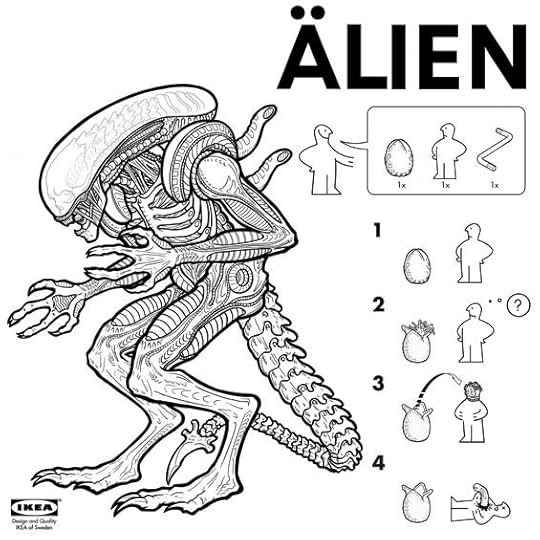
Hat tip Beautiful/Decay. Click the image to see more IKEA monsters!
Have you ever wanted your very own Alien? Look no further! In a few easy steps you too can have your own xenomorph! Or any of a number of IKEA’s line of popular monsters!
This series is by illustrator Ed Harrington. Check out his website for more hilarious and irreverent takes on pop culture.

September 22, 2014
Heavenly Bodies
Click on the image for more. Hat tip Who Killed Bambi.
(Note: I get religious here. If you find religious talk uncomfortable or offensive, feel free to enjoy the rest of my blog :) )
I love these images from photographer Paul Koudounaris. I’ve actually always loved relics. Part of it is, of course, because I have a macabre streak a mile wide (as anyone who has read my stuff or followed this blog may attest). Part of it, though, is that the practice of venerating relics is a deeply Catholic practice, and I love the theology behind it. Catholics are a physical people. We believe that our salvation is through the Word made flesh, who lived and died for humanity. That the church — that is, the people of the faith — is Jesus Christ on earth. And our central sacrament is the consumption of the Body and Blood, which we believe is made the actual body and actual blood of Christ (transubstantiation is a tricky wicket, which I won’t go into here. If you’d like to know the specifics, feel free to ask in the comments). So these bodies of the holy men and women are adored and adorned as not only touched by the holy, but suffused with it.
If you think about it, though, this is not only a Catholic practice, but a human one. Think of the various political figures who have been preserved, from the pharaohs in Egypt to Lenin. Sometimes there are religious beliefs at work, but sometimes the reasons are entirely secular. Recently a cloth that had St. John Paul II’s blood on it from when he was shot went missing. The level of derision online for those “freaky Catholics” was…well, entirely predictable, actually. Thing is, though, is that something similar has happened with the pink dress that Jackie Kennedy was wearing when her husband was assassinated, that was covered in the president’s blood and brains. People have been fascinated with and clamoring to see it for decades. Imagine the reaction if it was discovered that the dress was stolen or destroyed.
I think we all have an attachment to the tangible. It can be pathological, such as in the case of hoarding. But I think it can also be important to recognize that the holy is not just some remote nebulous concept. It is all around us, in the physical world we touch and breathe and are an integral part of.



